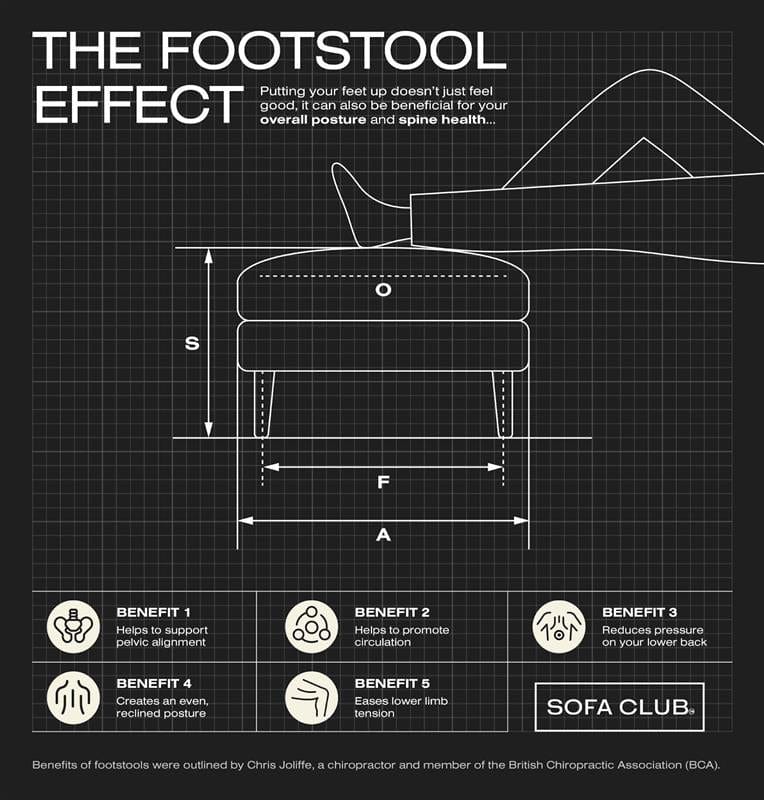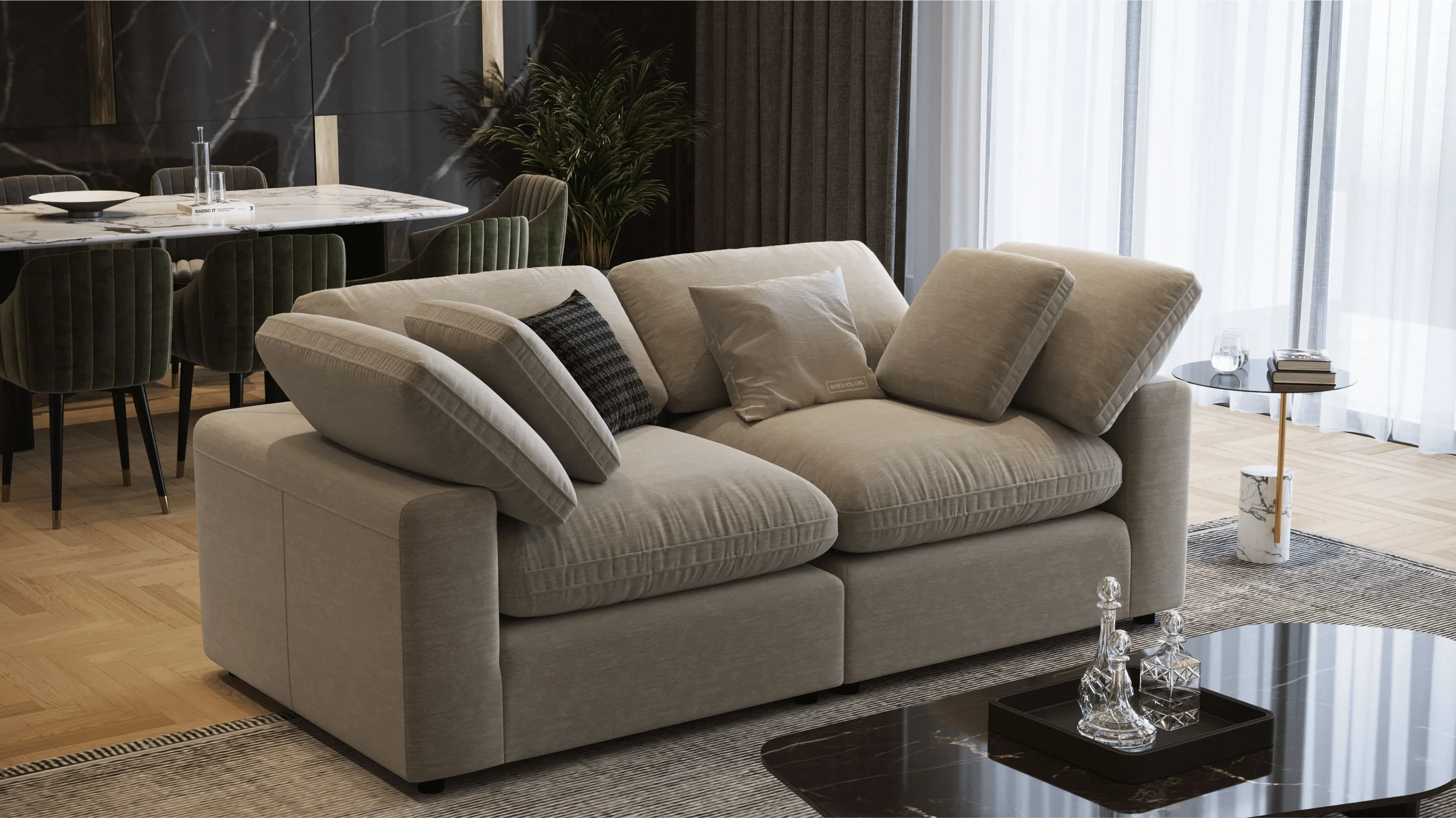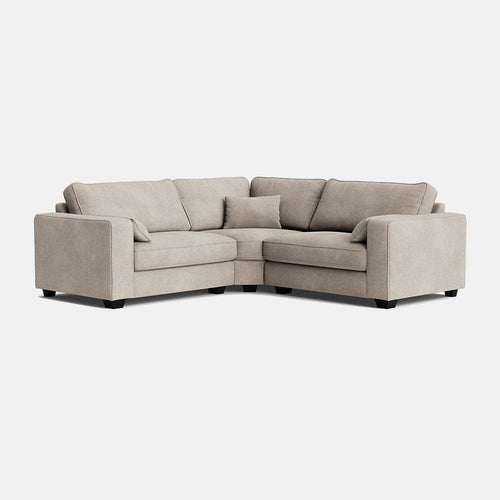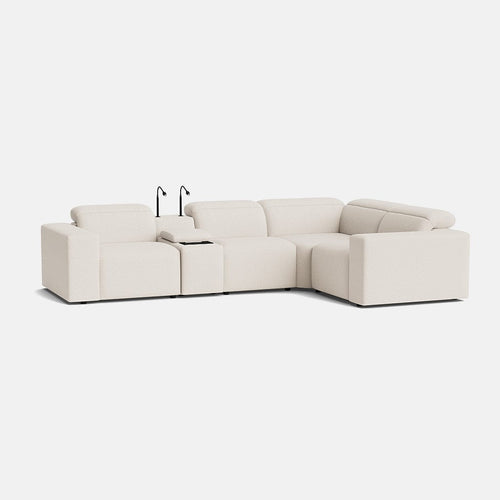We can’t ignore it any longer… The UK has a serious back pain problem. In fact, more than 2.8 million adults suffer from chronic back pain, costing the NHS and social care sector a staggering £12.3 billion annually, and impacting many people’s ability to enjoy their life.
So, what’s the culprit? Well, sedentarism plays a part. According to the NHS, many people in the UK spend an average of nine hours a day sitting, whether that’s watching tv, using the computer, or reading. And when poor posture joins the party, your back suffers.
To help the nation understand how bad sitting habits can affect your health, we’ve teamed up with Chris Joliffe, a chiropractor and member of the British Chiropractic Association (BCA), to break down how different sofa and chair positions can mess with your posture and spine.
Popular sofa sitting positions and how they're harming our health
We asked 1,000 people their most popular sitting positions and analysed them to reveal how much they could be harming people. And let’s face it, how we sit is hurting us. According to our recent research, a whopping 75% of people report experiencing pain or discomfort thanks to the way they sit on their sofas or at their desks.


We’ve ranked the most common sofa sitting positions from worst to best according to spine-friendliness, providing tips on how to adapt each one to help you avoid long-term damage:
1.The Armrest Ache
Leaning sideways against the armrest may feel like the ultimate chill move, but your posture is screaming internally. It’s not just the most popular position, it’s also the most villainous. This pose twists your back and neck in unnatural ways, throws off your weight distribution, and leaves your poor spine wondering what it did to deserve this.
Chris's advice: “To modify this position, use a small cushion to elevate your arm and keep your shoulders level. Try not to stay sitting like this for too long and switch sides regularly.”
2.The Slouch Potato
Let’s be honest, slouching can sometimes feel like our default position, sneaking up on us mid-movie, during a work email, or three hours into reading a book. But while it might feel comfortable initially, slouching does your spine zero favours. Over time, it can mess with your spinal curvature and thanks to how often we do it, the damage can build up.
Chris's advice: “To avoid slouching, simply place a lumbar support cushion behind your lower back and try to be mindful of your posture, adjusting to sit more upright when necessary.”
3.The Pretzel Perch
Ah yes, the classic cross-legged crunch, cosy for the soul, but not so much for your spine. Sitting this way may feel good, but it encourages pelvic rotation and spinal asymmetry, putting extra pressure on your joints and cutting off circulation to your lower limbs.
Chris's advice: “To adapt this position so it puts less stress on your body, simply place a cushion, pad, or support beneath your hips to level the pelvis and mix up your leg positions regularly to reduce stiffness and pain.”
4.The Horizontal Hazard
A third of people (33%) love to rest sideways on the sofa, and honestly, who can blame them? But while this might feel like peak relaxation, our back disagrees. Unless your neck and spine are properly supported, this lounging style can mess with your posture. Additionally, if you always lie on the same side, it can lead to uneven pressure.
Chris's advice: “Use a pillow to support your neck and keep your spine aligned. Avoid keeping your head rotated for long periods of time, and try to position your body towards what you’re looking at.”
5.The Recline Risk
Almost three in 10 Brits (29%) love to kick back with their feet up, but it might not be as comfortable as you think, at least for the spine. Reclining without proper back support will reduce your core engagement and can lead to pelvic tilt and tight hamstrings. In other words, you may be chill now, but you’ll ache later.
Chris's advice: “To reduce the risks, ensure your lower back is supported with a cushion or a lumbar roll, avoid sitting like this for long periods of time, and keep your head aligned.”
6.The Gold Standard
Tied for third in popularity, but number one in your chiropractor's heart. Sitting with your feet on the floor is the only position that gets the expert seal of approval. Feet flat, back straight, and a posture like you’re trying to impress royalty will evenly spread your body weight, and engage your core while reducing the strain on your spine.
Chris's advice: “Keeping the natural curve of your spine helps with alignment and reduces pressure on discs and muscles. But, while this posture might be the best, it can be difficult to sustain. If your muscles have weakened or lost flexibility, it is beneficial to support yourself with cushions and work on building that postural strength.”
But what about how we sit at a desk or table?
You might have thought that we were only here to ruin your favourite sofa positions, but no, bad posture doesn’t clock out when you sit at a desk. It follows you. And yes, your work throne is very much included.


We’ve ranked the top five desk sitting positions from worst to best for a happy and healthy spine:
1. The Desk Dive
The classic desk dive, when you’re so deep into work (or online shopping) that you end up nose to space bar with your keyboard. But leaning forward like this rounds your spine, strains your neck, and puts way too much pressure on your cervical discs.
Chris's advice: "It’s natural for our body to slowly lean forward, but to prevent this from happening, bring your monitor closer, elevate your screen to your eye level, and support your forearms at desk level.”
2. The Slouch Monster
A quarter of Brits (26%) have fully embraced their inner slouch monster, but it’s important to note that hunching over like this can lead to the collapse of spinal curves, an increase in back strain, and weakening of your postural muscles.
Chris’s advice: "Slouching is likely to occur if we spend long hours in an uncomfortable chair, using an ergonomic chair designed to support your body, promote good posture, and reduce muscle and joint strain will help against this.”
3.The Seat Skimmer
You’ve really taken “on the edge of your seat” to a whole new level, but perching forward without using your backrest means no support, and while you might be able to maintain a straight back for a whole five minutes, you will end up slouching and adding unnecessary tension to your legs.
Chris's advice: "Sitting back fully in your chair is the first step towards breaking your skimming habit. Adjusting the seat depth to properly support your thighs, and using head support also make a significant difference.”
4.The Cross-legged Conundrum
Even the most regal posture loses its charm after several hours. While it might feel natural or elegant, this position quietly disrupts your spine's alignment. It causes pelvic tilt, twists your spine and leads to muscular asymmetry, not to mention the added pressure on your hip joint.
Chris's advice: "Unfortunately for this position, there’s no other solutions besides keeping both feet flat on the floor and using a footrest if needed.”
5.The Spine Sinker
One in five Brits like to recline in their chair like they’re floating. But here’s the catch, without proper support, that blissful lean turns your core into jelly and dumps all the pressure straight onto your lower spine. It’s less relaxed professional and more regular chiropractor visit.
Chris's advice: “Start by adding some lumbar and neck support to help your spine maintain its natural curves. Then, adjust your recline angle to maintain proper spinal alignment. These small adjustments will make a big difference in reducing tension.”
6.Sitting uptight with your back straight and supported
Look at you, posture perfectionists! Turns out most people are actually doing this one right. Sitting upright with your back straight and supported helps maintain proper spinal alignment, engages your core, and eases the strain on spinal discs and joints.
To all the straight sitters out there, congratulations, you’re top of the class. Gold stars, and less back pain for you!
The impact of poor posture on our back, neck, and shoulders
We’re not here to ruin your fun, or your favourite sofa spot for that matter. But we are here to tell you that the way you sit every day actually matters… a lot.
Poor posture can start causing discomfort in just a few hours. But keep those bad habits going, and they can snowball into much bigger problems. It can lead to spinal degeneration, disc herniation, and chronic pain. Although it might be the stuff you usually hear your grandparents complaining about, it can very well affect you too.
Chris reveals a breakdown of the long-term risks linked to those everyday aches and pains:
Lower back pain
“Usually a sign of stress on your lumbar joints and discs, or just tired, overworked muscles. If ignored, it can turn into chronic issues like arthritis and sciatica.”
Neck pain or stiffness
“Often caused by forward head posture or lack of support. It affects cervical joints, discs, and nerves.”
Upper back pain
“Blame thoracic rigidity – otherwise known as a stiff upper back – and poor posture for this one. It can seriously limit your mobility and leave you feeling like you’re wearing an invisible backpack of bricks.”
Shoulder pain
“Commonly caused by a slouched posture, repetitive desk work, or leaning on one arm. It may even result in impingement or muscular imbalance.”
Pins and needles
“A tingling sensation on your limbs may signal nerve compression or irritation, often from poor circulation, spinal positioning, or disc pressure, which can potentially indicate long-term neurological effects.”
And while you might think this is just something your parents or grandparents should worry about, it's actually Gen Z and Millennials who are especially at risk. Thanks to endless screen time, sedentary habits, and the era of remote work, younger generations are building poor postural habits early, and that makes long-term musculoskeletal issues much more likely down the line.
Footstool to the rescue
We know you love kicking your feet up, and guess what? You don’t have to stop. In fact, we’ve got the perfect sidekick for your lounging lifestyle… the footstool.


This often overlooked piece of furniture doesn’t just feel good, it actually does good too. When used properly, a footstool can do wonders for your posture and spinal health, including supporting proper pelvic alignment, reducing pressure on your lower back, promoting better circulation, and more.
Methodology
In May 2025, we commissioned a survey via TLF to 1,000 Brits to discover their sitting habits. We split the data by age, gender, city and region. Additionally, Sofa Club partnered up with Chirs Joliffe, chiropractor and member of the British Chiropractic Association (BCA) to understand how each sofa and desk position can impact people’s health.




































































































